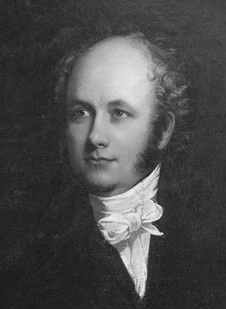History of the company
Foundation
George Fife Angas, after resigning from the association, offered to set up a company to buy up the remaining unsold land, which was agreed by the Colonisation Commissioners, so long as this new company, the South Australian Company, did not attempt to set up monopolies in the colony. [1]
The founding Board of Directors of the South Australian Company, established on 9 October 1835, were Angas as Chairman; Raikes Currie; Charles Hindley MP; James Hyde; Henry Kingscote; John Pirie, Alderman; Christopher Rawson; John Rundle MP; Thomas Smith; James Ruddell Todd; and Henry Waymouth; with Edmund John Wheeler (Manager); Samuel Stephens, (Colonial Manager); and Edward Hill (Secretary pro tem ). [2]
The original purpose of the company was to help prospective colonists meet the obligations set out in the South Australia Act 1834. [3] The United Kingdom did not want the "province" to be a financial burden, like other colonies, and imposed certain conditions through the Act. One of these conditions was the sale of real property (land) to the value of £35,000. Each director was required to buy at least £2,500 in shares in the company. The biggest sales in land carried out by the company were done in the names of Angas, [3] [4] who purchased 102 lots of land of 135 acres (55 ha) on behalf of the company, which included prime real estate in both town and country, totalling 13,770 acres (5,570 ha), and with the right to rent an additional 220,160 acres (89,100 ha) of pasturage (worth £40,000), [1] and the Currie family, who purchased £9,000. Research published in 2018 and 2019 concluded that these sales and the creation of company, which secured the establishment of South Australia, link the colony's creation with slavery in the British West Indies. [3] [4]
It was this purchase of land that enabled emigration to commence. It was purely a commercial venture, but without it, the colonisation plan would not have come to fruition. [1]
First Fleet of South Australia (1836)
After a historic meeting at Exeter Hall on 30 June 1834, where the principles, objects, plan and prospects of the new Colony of South Australia were explained to the public, hundreds of enquiries from prospective emigrants arrived at the South Australian Association's headquarters in London. [5]
In January 1836 four ships sailed from England on behalf of the company, ahead of the Colonisation Commission's planned expedition. They developed a settlement at Kingscote on Kangaroo Island, in July 1836, but when farming proved unviable, both the settlement and the company's operations were moved to the mainland. The company provided basic infrastructure for the new colony and sold or leased land to immigrants who came to settle. [1]
Over the course of six months, nine ships, which may be termed the First Fleet of South Australia, arrived in the new colony: [6]
| Date | Ship | Size | Purpose | Passengers |
|---|---|---|---|---|
| 27 July | Duke of York | (190 tons) | S.A. Company | 38 passengers |
| 30 July | Lady Mary Pelham | (206 tons) | S.A. Company | 29 |
| 16 August | John Pirie | (105 tons) | S.A. Company | 28 |
| 21 August | Rapid | (162 tons) | Commissioners | 24 |
| 11 September | Cygnet | (239 tons) | Commissioners | 84 |
| 5 October | Emma | (181 tons) | S.A. Company | 22 |
| 2 November | Africaine | (316 tons) | Various | 76 |
| 20 November | Tam O'Shanter | (360 tons) | O. Gilles | 74 |
| 23 December | HMS Buffalo | (850 tons) | Commissioners | 171 |
Post-settlement
During the first years of settlement, the company undertook the construction of a great deal of infrastructure: roads, bridges, mills, wharfs and warehouses. It contributed to the creation of the whaling, fishing and shipbuilding industries and encouraged mineral exploration. There was, however, a financial slump, or Depression, in the 1840s, and company dividends were unable to be paid out until 1848, after copper was discovered at Burra. [1]
The company continued to be an important part of the business affairs of Adelaide and the colony (later state) for over a hundred years. [1]
From 1872, the South Australian Company occupied offices on North Terrace on the corner of Gawler Place. The new building, "Gawler Chambers", was completed in 1914.
It was wound up on 17 March 1949, with the management of its remaining business transferred to Elders Trustee & Executor Company Ltd. [1]
- First office, erected 1836 at Kingscote, Kangaroo Island. (c. 1870)
- Office on North Terrace East, corner of Gawler Place. (c. 1872)
- Company office c. 1900
- Company office c. 1909
- "Gawler Chambers" c. 1914
- Company office c. 1914


























